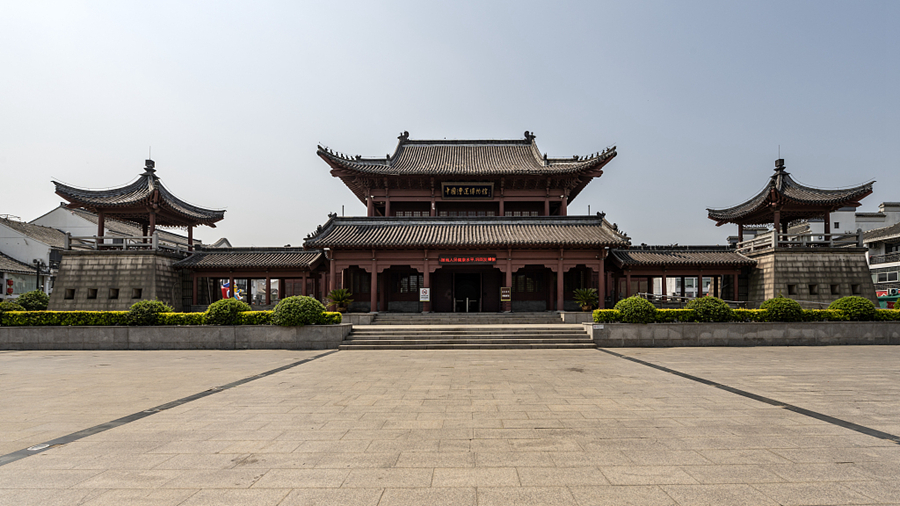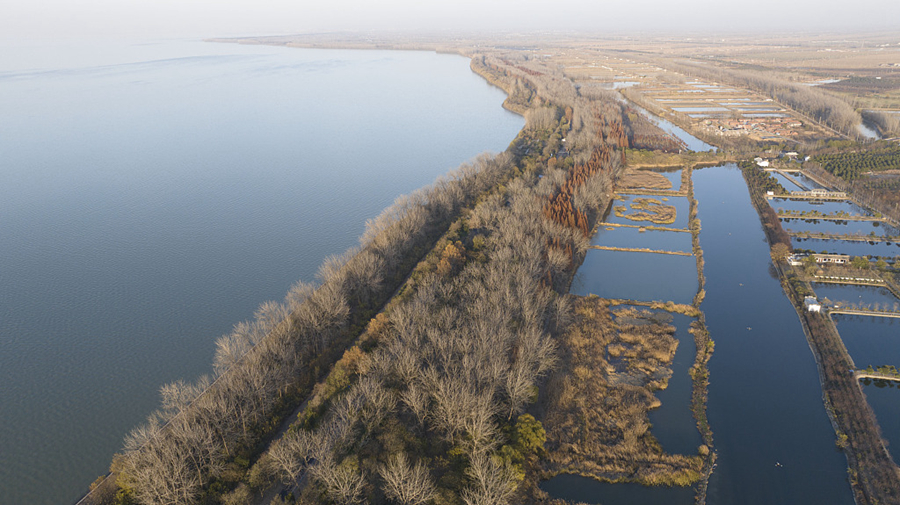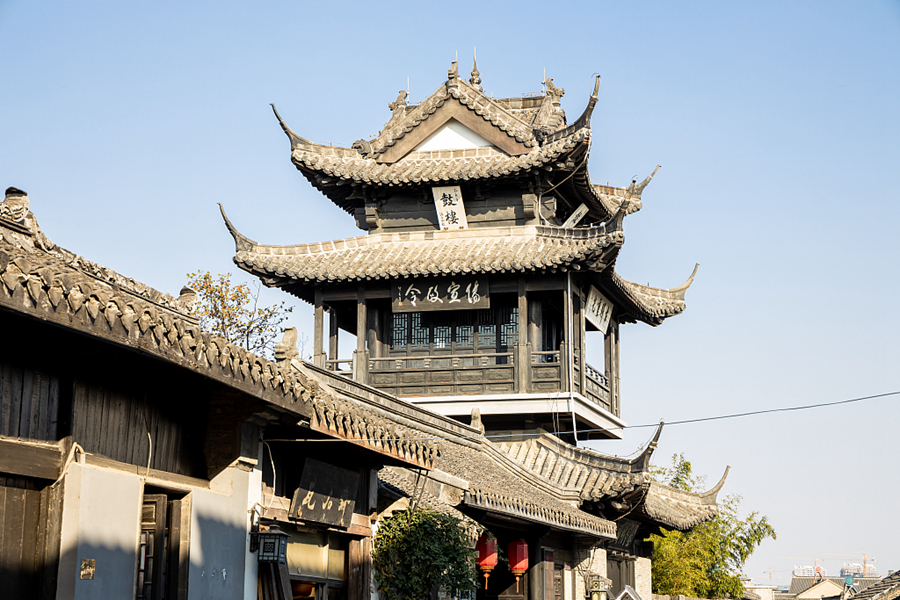Grand Canal-themed travel routes underscored by authority

China Water Transport Museum (CFP Photo)
China's Grand Canal, the longest artificial waterway in the world, was inscribed on the UNESCO World Heritage list on June 22, 2014. In celebrating the 10th anniversary of this recognition, Jiangsu recently unveiled three travel routes related to the historic waterway.
Spanning Huai’an, Yangzhou and Suqian, these routes feature 34 key sties showcasing water engineering and grain transportation, allowing visitors to delve into the canal cities’ history, culture and folk customs.

Qingjiang Pound Lock
In Huai'an, where the Grand Canal meets the Huaihe River, the well-preserved Qingjiang Pound Lock stands as a testament to ancient hydraulic engineering. Ancient watercourse, wharf and dams were also found at the Banzha ruins in 2014 and 2015, as noted by Zhang Rongxin from the city’s Institute of Cultural Relics Protection and Archaeology.

The dike around Hongze Lake
The dike around Hongze Lake, reinforced and extended multiple times in history, represents the evolution of hydraulic engineering. The Qingkou complex in Huai’an is also one of the most technologically sophisticated water conservancy projects built for the canal. The site integrated technologies from multiple disciplines, including hydrology, hydraulics, sediment studies, masonry structure, and materials engineering.

Exhibit at China Water Transport Museum
Ma Weiyuan, an expert of the Ming Dynasty (1368-1644) history and also senior editor at Phoenix Publishing & Media Group, said water transport was a complicated endeavor involving administrative and military affairs of various provinces in significant coordination. In the Ming Dynasty, Huai’an was home to the Water Transport Governor’s Office, the highest institution overseeing national grain transport by waterways. Today, the China Water Transport Museum, located to the north of the ruins, offers insights into this vital aspect of imperial logistics.
In ancient China, emperors also utilized the Grand Canal for their journeys. Notably, Emperor Yang of the Sui Dynasty (581-618), travelled from Luoyang to Yangzhou via the canal for three times. His tomb, discovered in Yangzhou in 2013, is also one of the sites on the recommended travel route.
In Suqian, the Dragon King Temple Temporary Palace was used by Emperor Qianlong in the Qing Dynasty (1644-1911) as residence for five of his six southern tours.

Xinsheng Street in Suqian
Connecting post stations and streets, the Grand Canal also reflects changes in urban development. For instance, Xinsheng Street, built in 1577 during the Ming Dynasty, is one of Suqian’s most intact old town areas.

The Mengcheng Post
In Yangzhou, Mengchengyi (Mengcheng Post) was established in 1375 and expanded over time, becoming a major post station along the Grand Canal during the Ming and Qing dynasties.
Furthermore, temples in Huai'an and Yangzhou are also famous scenic spots, revealing the canal’s role in fostering religious and cultural exchanges across the northern and southern regions.